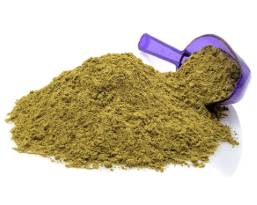Guardian partners with Caribbean GIS to track chikungunya in the Caribbean
GUYANA – Everything about chikungunya is painful. Even the virus’ name comes from a Kimakonde word describing the contortions of one suffering severe joint ache. Fever, rash, cramps, headache, nausea and fatigue are just some of the symptoms of the mosquito-borne illness.
Nor is tracking the spread of the disease across the Caribbean any easier. English-language reports on the virus’ transmission at the sub-regional level are put out by public health authorities, including the Caribbean Regional Public Health Agency (CARPHA), the Pan American Health Organisation (PAHO) and the Center for Disease Control (CDC).
But keeping up with information from all of these sources can be time-consuming, especially if you just want to keep an eye on the spread of the disease in your own country, or get a sense of the broader regional picture.
“It’s easy to point a finger and criticise but I thought it would be better to actually demonstrate that something better could be done,” said Vijay Datadin, founder and lead consultant at Guyana-based Caribbean GIS.
Datadin should know. He’s made a career of applying geographic information systems (GIS) to the complex interrelationships between human and natural resources.
“When I looked at the outputs of CARPHA, PAHO and even the CDC, I thought they could be enhanced. Specifically, PAHO is putting out data reports in PDF format, which is really less than ideal. Where there are maps, they could be made more informative and charts would help citizens understand the situation more easily. I felt it could be done better, because they’re still doing it in the old-fashioned way.”
Datadin is co-lead on a new open data project that aims to fix two major pain points associated with the “old-fashioned way” of sharing public health data. First, as a one-stop resource for official chikungunya numbers, the online tracker seeks to cut out the hassle of having to check multiple websites, in order to get the latest collated statistics on the spread of the virus.
The second pain point is how chikungunya transmission data are presented by the three leading public health agencies in the Americas. Modern public health sites like HealthMap aggregate news reports in real-time and push notifications to subscribers, filtering by relevance based on geolocation. They are built with responsive design to dynamically adapt to different form factors such as mobile devices, tablets and desktop screen displays. Plus they are mobile-optimised for lightweight browsing, and social-friendly for maximum user engagement.
By comparison, the regional websites are less impressive. The CDC website provides a static map showing countries where local transmission has been documented, and says that “chikungunya case counts are publicly released every Wednesday.” PAHO provides a weekly report every Friday afternoon of Chikungunya counts for most countries of the Americas and a static map showing countries with local and imported cases. CARPHA provides a weekly update of Chikungunya counts every Monday. The CARPHA site also has an interactive map with a useful timeline feature illustrating the progression of the disease through the region and mouse-over info boxes showing the number of cases in a country.
The region’s public health services could learn from the open data approaches that are becoming the expected standard for providing public information, Datadin said.
“Around the world, public organisations are no longer simply publishing their data in PDF format or static maps but in open data formats and interactive maps. The value in doing it this way is that data scientists, researchers and other interested parties are then able to not just see the data but actually use it,” Datadin said.





